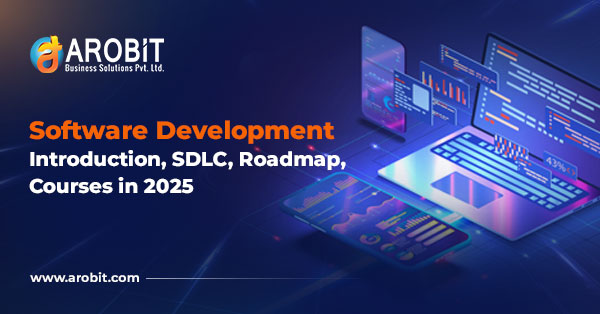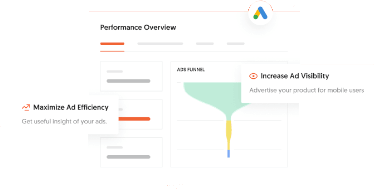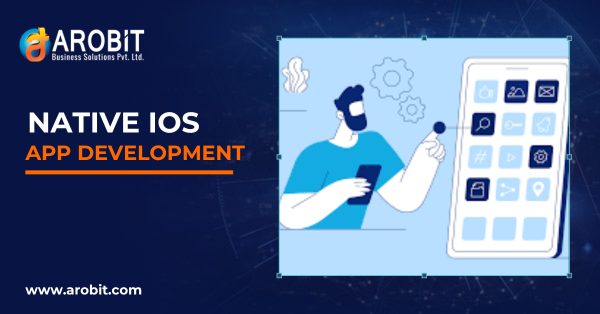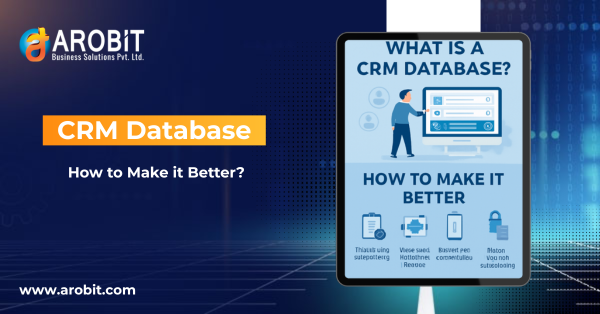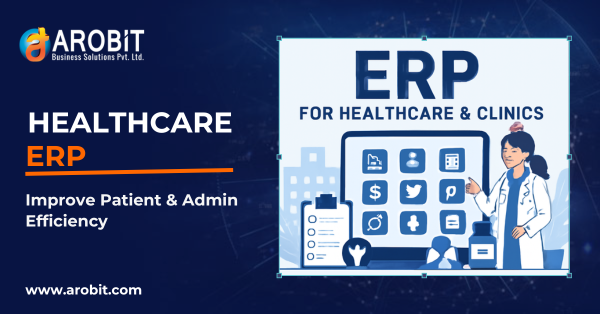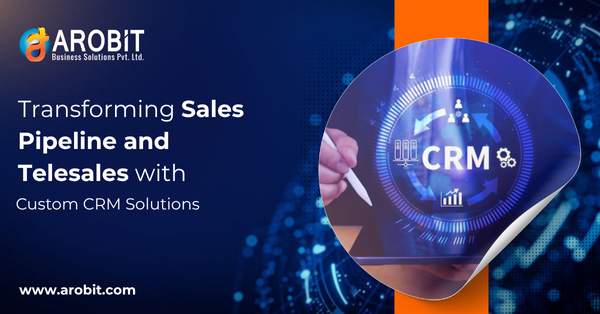“With high demand, the Software development market is projected to cross $898 billion by the year 2029. “
Businesses around the world are enhancing their business deliveries and operations through software development. It brings in efficiency and eventually gives the business an edge in such a fiercely competitive market.
So, it is important for businesses to get good hold of the nuances of software development to proceed ahead with clarity. To make it easy, below we have it all covered for you. Read on.
Software Development: What Brings You Here?
The process of developing, building, testing, and maintaining programs and systems that satisfy particular user needs called software development. Several phases make up this procedure; together they are called the Software Development Life Cycle (SDLC), which guarantees the quick and efficient delivery of software products. But, this is not, there are several components that come along with the respective investment. Check it out.
- Planning
- Design
- Implementation
- Deployment
- Maintenance
To make things more clear, below we have highlighted what these phases will bring in for you to achieve complete success. Read on.
Understanding the Software Development Life Cycle (SDLC)
A systematic method guiding the development process, the Software Development Life Cycle (SDLC) comprising several stages, each meant to guarantee high-quality, maintainable software fulfilling user needs.
Phases of SDLC
Phase | Description |
1. Planning | The whole software project is set up during the planning stage. Stakeholders here specify the project's high-level needs, goals, and scope. This stage includes defining defined objectives, determining business needs, and specifying deliverables. Teams allocate duties, develop schedules, evaluate available resources, and project expenses. |
2. Requirement Gathering | The development team works with consumers, end-users, and stakeholders during requirement gathering to obtain thorough knowledge on what the product has to accomplish. This means recording both functional and non-functional criteria including system features, performance goals, and security demands. Interviews, questionnaires, and seminars are common components of the process to guarantee a thorough knowledge of customer demands. |
3. Design | The design stage converts needs into a thorough software plan. Designers build system architectures, specify data flows, and create user interface (UI) prototypes. This stage covers low-level design, which details particular parts and their relationships, as well as high-level design, which encompasses general system structure. |
4. Implementation | Implementation, or development, is where the actual coding takes place. Developers write source code according to the design specifications, using appropriate programming languages, frameworks, and tools. This phase may involve integrating different modules, following coding standards, and conducting preliminary testing. |
5. Testing | To guarantee the program satisfies quality criteria and operates as intended, testing is essential. Testers run user acceptability, system, integration, and unit tests among other kinds of tests. The goal is to find and fix defects, confirm that every feature functions as described, and guarantee the program is dependable, safe, and runs effectively under anticipated circumstances. |
6. Deployment | Deployment is the process of delivering finished software to end users or the production environment. Depending on the deployment plan, this phase could comprise full-scale rollout or pilot launch. Teams make sure the software is correctly installed, set up, and integrated with current systems. |
7. Maintenance | Maintenance is the ongoing process of supporting and enhancing the software after deployment. This includes fixing bugs that surface in real-world use, releasing updates to address security vulnerabilities, and adding new features to meet evolving user needs. Maintenance activities ensure the software remains functional, secure, and relevant over time. |
Software Development Strategies for 2025
Now, when you have clarity about how a software development process goes about, it is important to strategize it well. This is why below we discuss the essential software development strategy that can help you achieve success. Here are some effective approaches:
1. Agile Development
Agile methodologies focus on iterative development and collaboration. Teams work in sprints, allowing for flexibility and rapid adjustments based on user feedback. This approach is particularly beneficial for projects requiring frequent changes.
2. DevOps Integration
DevOps enhances collaboration between development and operations teams. By automating processes and promoting continuous integration and delivery, organizations can reduce time-to-market and improve software quality.
3. Custom Software Development
Custom software development allows businesses to tailor solutions to their specific needs. This approach can provide a competitive edge, ensuring that the software aligns perfectly with business objectives.
Roadmap for Software Development in 2025
To navigate the evolving landscape of software development, businesses should consider the following roadmap:
Step 1: Define Objectives
Clearly outline what you aim to achieve with the software. This includes identifying target users, key features, and success metrics.
Step 2: Research and Analyze
Conduct thorough market research to understand user needs and competitor offerings. This will inform your software development strategy and feature set.
Step 3: Assemble the Right Team
Build a team of skilled professionals, including software developers, UI/UX designers, and project managers. Ensure they have experience in the required technologies and methodologies.
Step 4: Choose Development Methodology
Select a suitable development methodology, such as Agile or Waterfall, based on project requirements and team dynamics.
Step 5: Continuous Testing and Feedback
Incorporate testing throughout the development process to identify issues early. Gather user feedback to refine features and improve the user experience.
Step 6: Launch and Monitor
Once the software is developed, launch it to a limited audience first. Monitor user interactions and performance metrics to identify areas for improvement.
Step 7: Plan for Maintenance
Create a maintenance plan to address issues and implement updates post-launch. Continuous support is essential for long-term success.
So, it is important for you to understand what your business objectives are and accordingly plan for the strategy. In fact, it is important that you consider connecting with the right team where proper strategy will be planned that ticks all the boxes to perfection.
Choosing a Software Development Company
Now when you are looking for the right team or software development company to help you, it is important that you plan it right. Below we are going to specify some of the essential steps for you to follow. Check it out.
Experience and Expertise
Selecting a software development company with proven experience and expertise in your industry is critical for project success. Such companies understand the unique challenges, compliance requirements, and workflows specific to your business domain. For example, a healthcare-focused developer will be familiar with HIPAA regulations, while a fintech specialist will know about PCI DSS compliance.
Portfolio
A company’s portfolio offers tangible evidence of its capabilities, design sensibilities, and problem-solving skills. By examining past projects, you can assess whether the company has handled assignments similar in scope, complexity, and technology to yours. A strong portfolio should also showcase the company’s adaptability to various industries and project types, giving you confidence in their ability to meet your specific needs.
Client Testimonials
Client testimonials and reviews provide valuable insights into a software development company’s reliability, communication skills, and commitment to client satisfaction. Platforms like Clutch, GoodFirms, and G2 feature authentic feedback from previous clients, highlighting strengths and potential weaknesses.
Technical Skills
Ensuring the company possesses the technical skills relevant to your project is essential. Understand their proficiency in the required programming languages, frameworks, and tools, such as Java, Python, .NET, React, or cloud technologies. Confirm that they stay updated with the latest trends, like AI, IoT, or blockchain, and can deliver scalable, secure, and future-proof solutions.
If you are still looking for the right name, then we at Arobits can make the job easier for you. Below are the reasons why you must not hesitate and hire our software development services
Benefits of Custom Software Development Services
Engaging custom software development services offers numerous advantages:
- Tailored Solutions: Custom software meets specific business needs and workflows.
- Scalability: Custom solutions can grow alongside your business, accommodating new features and increased user load.
- Cost Efficiency: While initial costs may be higher, custom solutions can save money in the long run by reducing the need for multiple off-the-shelf products.
Final Takeaway
So, software development has to be one of the primary elements of corporate success as we move into 2025 and future. Businesses can certainly invest here and improve their operational efficiencies and promote innovation by means of the SDLC. All they need is the support of the correct allies for bespoke software development. This is where we at Arobit are going to assist. We will enable you to negotiate the complexity of the digital environment and make it easy for you to get closer to your objectives. Consult now!
FAQs
What is the main goal of software development?
Software development's main objective is to design solutions that effectively address certain issues and fulfill user needs.
How do I choose the right software development company?
Think about their experience, portfolio, client reviews, and technical knowledge pertinent to your project.
What is the difference between agile and waterfall methodologies?
While Waterfall is a linear method that follows a rigorous sequence of phases, Agile is iterative and flexible, allowing for modifications and adaptations.
Why is custom software development beneficial?
Custom software development offers more control and flexibility by providing tailored solutions that fit certain company requirements.

